Spunicunifait is the curious name adopted by a group of five musicians, all of whom have a great deal of experience in chamber music as well as in prestigious orchestras such as the Chamber Orchestra of Europe. They have founded this ensemble to be able to devote themselves to the in-depth study and period instrument performance of Mozart’s 6 String Quintets on Historical Instruments on this Triple Album.
Their choice of a name is also a trifle facetious, copying the example set by Mozart in a letter to his cousin Maria Anna Thekla Mozart in which he wrote the three mysterious words “Spuni Cuni fait“; these could mean spun or woven / coney or rabbit / and “made,” the past participle of the French verb faire: to make: something woven from rabbit skin, like the shawl his beloved cousin Bäsle wore in a self-portrait.
Spunicunifait
Lorenza Borani, Violin
Maia Cabeza, Violin
Max Mandel, Viola
Simone von Rahden, Viola
Luise Buchberger, Violoncello
Tracklist
Please note that the below previews are loaded as 44.1 kHz / 16 bit.Total time: 02:58:16
Additional information
| Label | |
|---|---|
| SKU | ALPHA1137 |
| Qualities | DSD 512 fs, DSD 256 fs, DSD 128 fs, DSD 64 fs, DXD 24 Bit, WAV 192 kHz, FLAC 96 kHz |
| Channels | |
| Artists | |
| Composers | |
| Genres | |
| Original Recording Format | |
| Instruments | |
| Recording Engineer | Jean-Daniel Noir |
| Recording Location | Tonstudio Ölberg-Kirche (Berlin), Wallace Private Residence (Frankfurt) |
| Release Date | August 29, 2025 |
Mozart - 6 String Quintets on Historical Instruments (Part 1)
| Label | |
|---|---|
| SKU | ALPHA11371 |
| Qualities | DSD 512 fs, DSD 256 fs, DSD 128 fs, DSD 64 fs, DXD 24 Bit, WAV 192 kHz, FLAC 96 kHz |
| Channels | |
| Artists | |
| Composers | |
| Genres | |
| Original Recording Format | |
| Instruments | |
| Recording Engineer | Jean-Daniel Noir |
| Recording Location | Tonstudio Ölberg-Kirche (Berlin), Wallace Private Residence (Frankfurt) |
| Release Date | August 28, 2025 |
Mozart - 6 String Quintets on Historical Instruments (Part 2)
| Label | |
|---|---|
| SKU | ALPHA11372 |
| Qualities | DSD 512 fs, DSD 256 fs, DSD 128 fs, DSD 64 fs, DXD 24 Bit, WAV 192 kHz, FLAC 96 kHz |
| Channels | |
| Artists | |
| Composers | |
| Genres | |
| Original Recording Format | |
| Release Date | August 29, 2025 |
Mozart - 6 String Quintets on Historical Instruments (Part 3)
| Label | |
|---|---|
| SKU | ALPHA11373 |
| Qualities | DSD 512 fs, DSD 256 fs, DSD 128 fs, DSD 64 fs, DXD 24 Bit, WAV 192 kHz, FLAC 96 kHz |
| Channels | |
| Artists | |
| Composers | |
| Genres | |
| Original Recording Format | |
| Release Date | August 29, 2025 |
Press reviews
Stereophile
Mozart’s six string quintets, composed for two violins, two violas, and a cello, span the length of his compositional maturity. The first, in B-flat Major K.174, was completed in Salzburg at the end of 1773, when he was 17. The last two were written within a year of his death.
There aren’t many recordings of these quintets on the instruments Mozart expected to hear, which makes this recording essential. Dynamic contrasts and soundstage width are less than on some modern instrument recordings, but in return we gain timbral contrasts—especially on viola—and clarity that enhance pleasure and understanding immensely.
Spunicunifait, a spun-for-the-occasion ensemble consisting of five young European string players with impressive credentials, takes its name from a word Mozart included in a letter to his cousin. Its meaning isn’t completely clear, but the humor it embodies manifests in Spunicunifait’s delightful performance of the first quintet’s opening movement. The 1st’s Adagio is fetchingly delicate, and its third movement minuet is quintessentially Mozartian in its songfulness. The final movement is a prime example of the sublime mixture of play and refinement that makes much of Mozart’s writing so endearing. Curiously, the recording includes a zippier, alternative performance of the quintet’s final Allegro without any explanation.
Where Spunicunifait’s interpretations fall short are in some of the slow movements. In the two most famous of Mozart’s quintets, No.3 in C Major, K.515 and No.4 in G minor, K.516, the music that expresses the soul of these masterpieces is taken too fast for my taste. By contrast, Quatuor Ébène is among many modern instrument ensembles that far more successfully touch the heart by devoting a full minute more to each of these movements.
Only logged in customers who have purchased this product may leave a review.



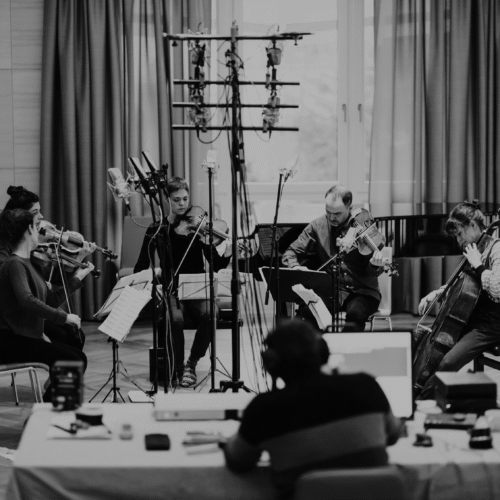
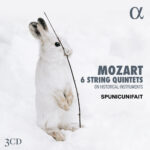

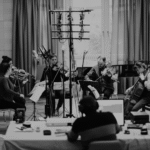
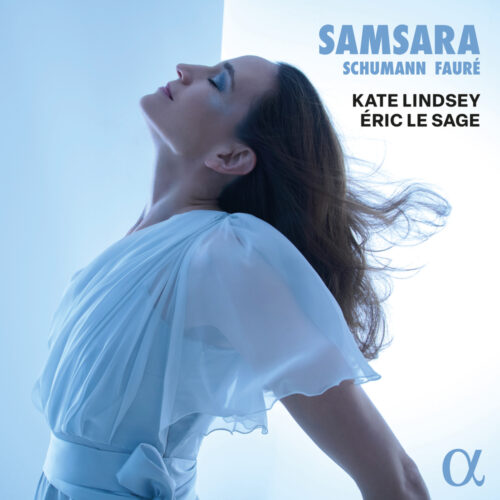
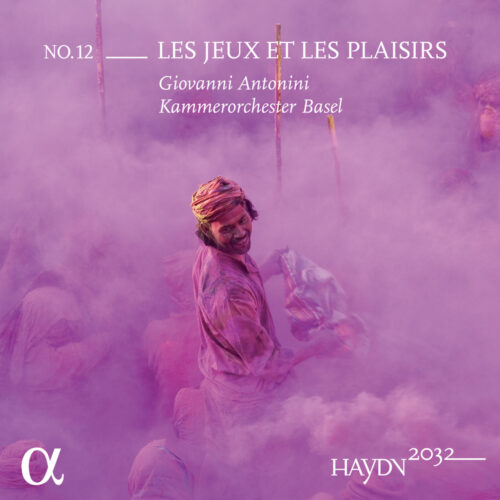
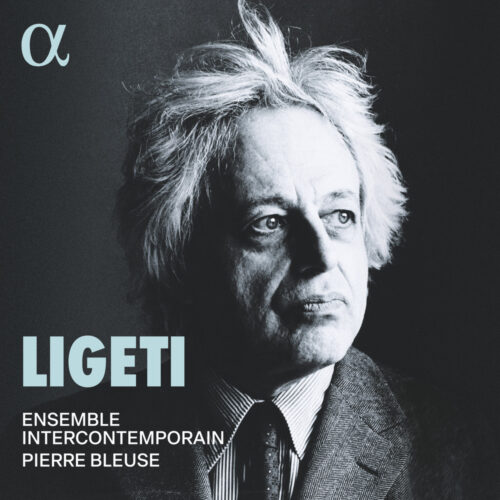

Reviews
There are no reviews yet.